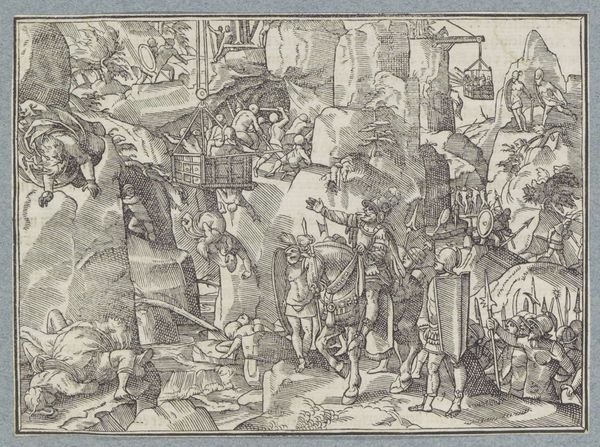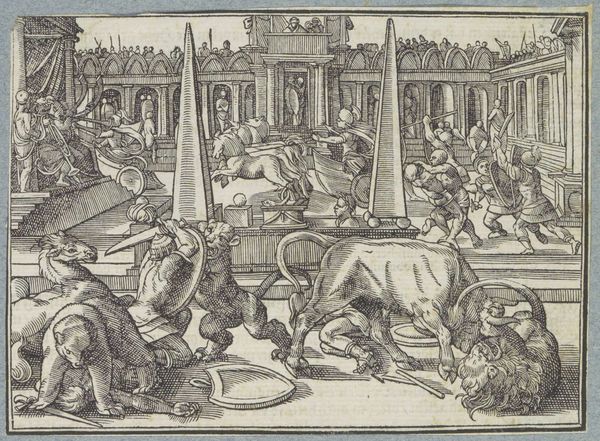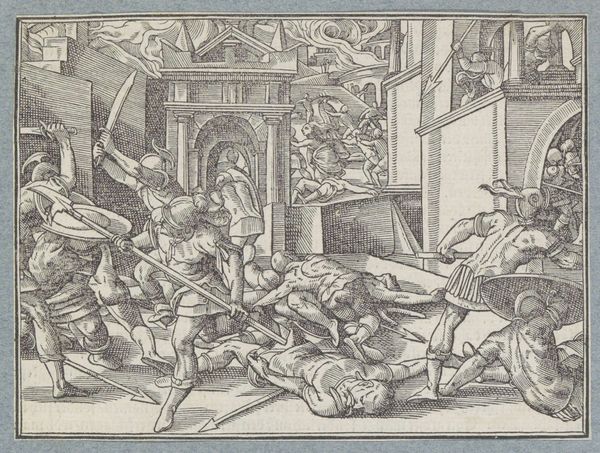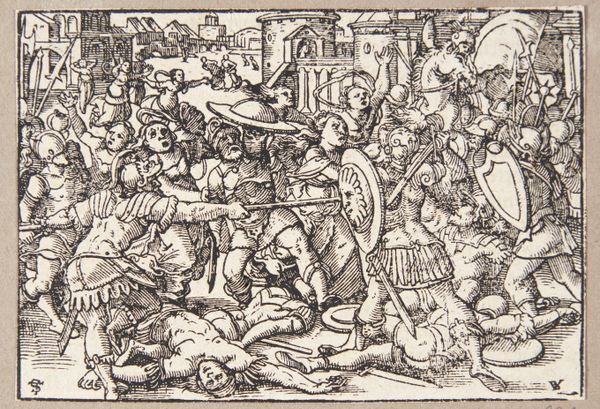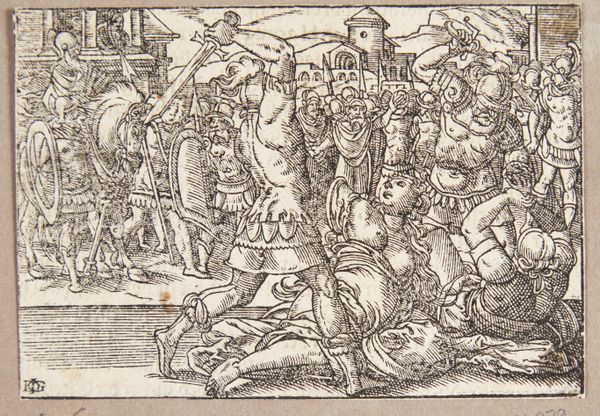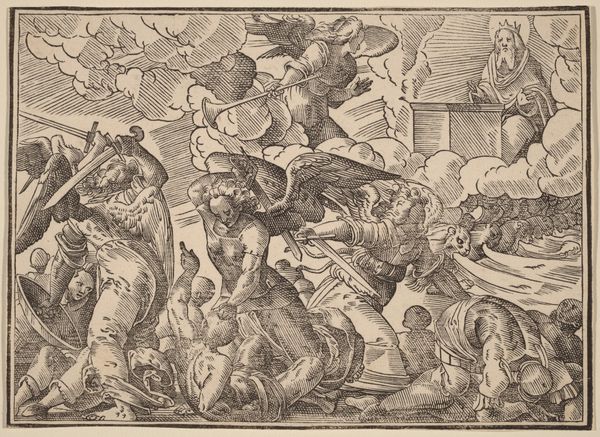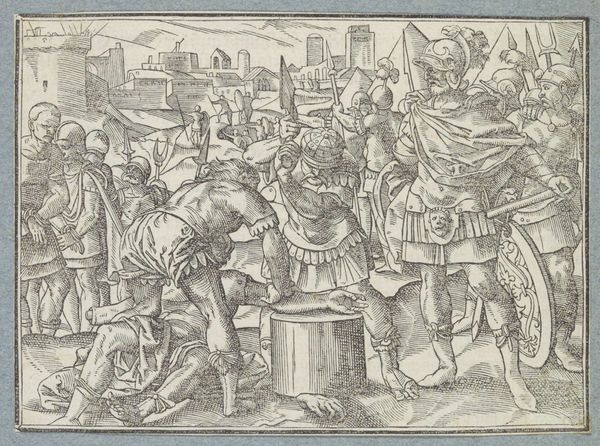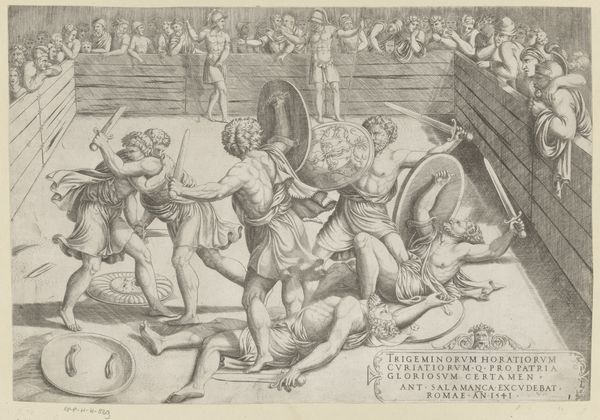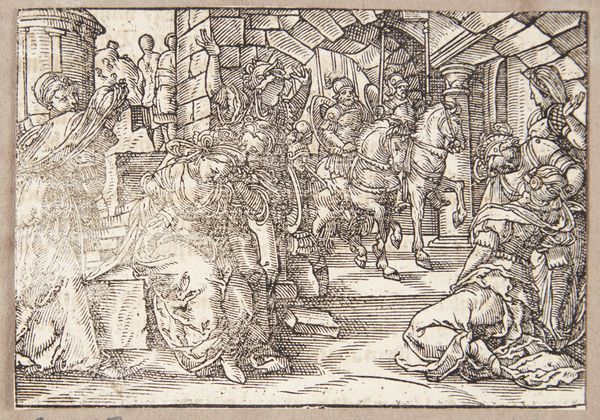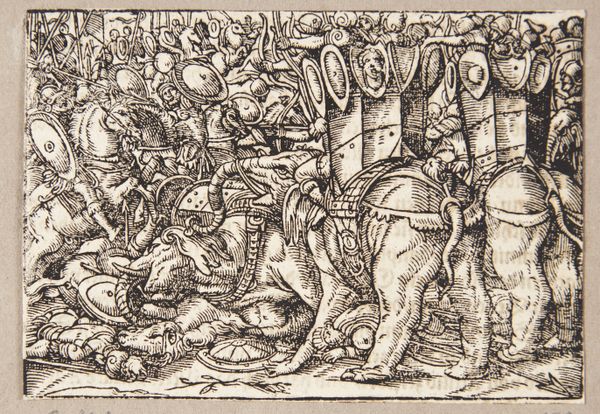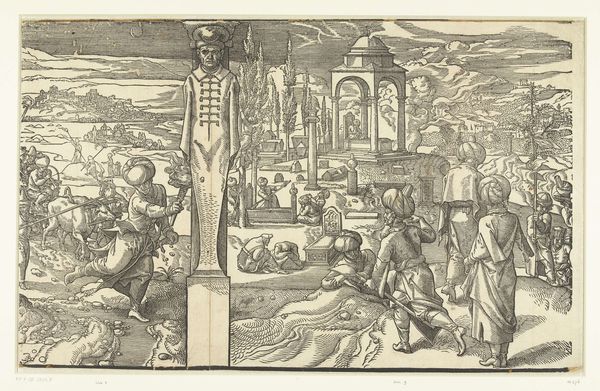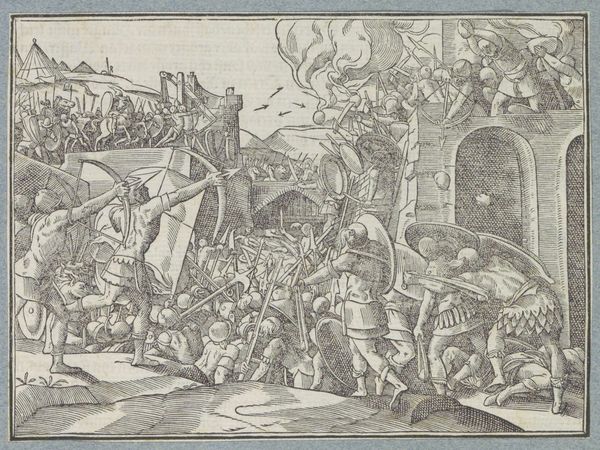
print, engraving
#
narrative-art
#
pen drawing
# print
#
figuration
#
pen-ink sketch
#
line
#
history-painting
#
northern-renaissance
#
engraving
Dimensions: height 109 mm, width 149 mm
Copyright: Rijks Museum: Open Domain
Editor: This engraving, “Mannen, vrouwen en kinderen gekruisigd of doodgestoken,” which translates to "Men, Women, and Children Crucified or Stabbed to Death," was created by Christoffel van Sichem I in 1574. It's a brutal depiction. What do you see in this work? Curator: This print resonates powerfully with the visual language of trauma and violence that was common during the religious wars of the 16th century. But beyond simply illustrating an event, it serves as a stark commentary on power, oppression, and the deliberate targeting of vulnerable populations – women, children, entire communities. Editor: How so? Curator: Consider the context: the Dutch Revolt was raging. Van Sichem, though working later, echoes the propaganda circulated during the period. What visual cues tell you that this is less about historical record and more about political messaging? Editor: The expressions are… generalized? Almost like caricatures. And there’s a lot of emphasis on the helplessness of the victims. Curator: Precisely! These details are key. The print is implicating the viewer, challenging them to consider their own complicity, or resistance, within these power structures. How does this imagery function as a form of resistance or protest in and of itself? What conversations can we have about this piece in today’s society? Editor: That’s… chilling. I didn’t realize how relevant this piece could be, even centuries later. Curator: Exactly. Art serves as a crucial lens for understanding historical and ongoing patterns of violence.
Comments
No comments
Be the first to comment and join the conversation on the ultimate creative platform.
